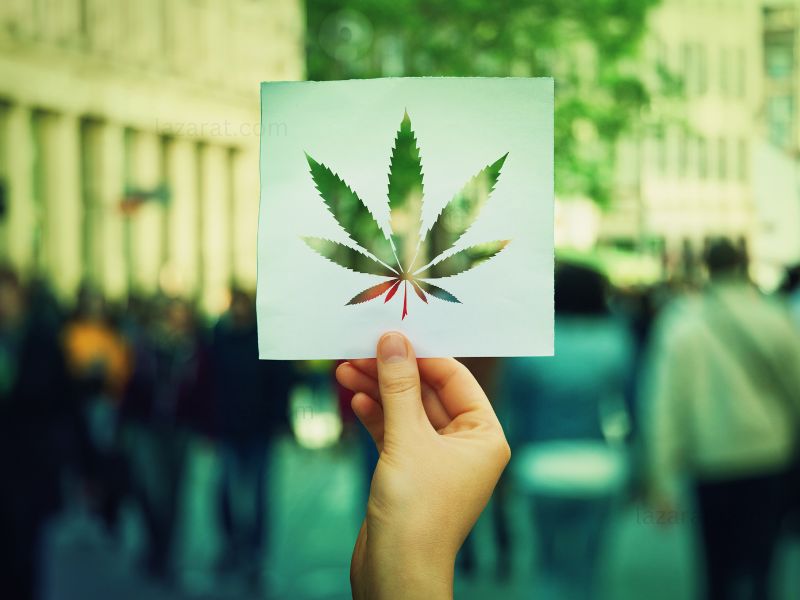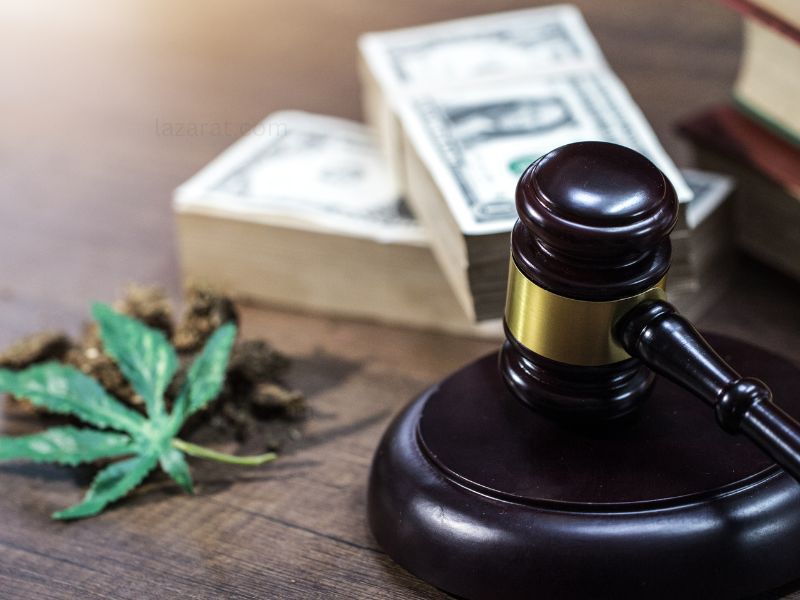Cannabis Prohibition has been a significant topic in modern history, particularly with the ongoing War on Drugs and its impact on marijuana history.
The Early Stages of Prohibition
The story of cannabis prohibition dates back to the early 20th century. Before this time, marijuana was used for medicinal and recreational purposes in many parts of the world. However, in the 1930s, attitudes towards cannabis began to change, leading to its criminalization.
Reefer Madness and the Marihuana Tax Act
One of the key events in marijuana history was the release of the film “Reefer Madness” in 1936. This propaganda film portrayed cannabis users as dangerous, unpredictable individuals, contributing to negative public perception. In 1937, the U.S. government passed the Marihuana Tax Act, effectively criminalizing the possession, sale, and cultivation of cannabis by imposing heavy taxes.
The War on Drugs
The War on Drugs, launched by President Richard Nixon in 1971, intensified the crackdown on cannabis. This policy aimed to reduce drug use, production, and trafficking by implementing strict enforcement measures and harsh penalties. As a result, marijuana arrests increased dramatically, with many individuals facing long prison sentences for minor offenses.
Racial Disparities in Cannabis Prohibition
One of the most troubling aspects of the War on Drugs is its disproportionate impact on minority communities. Some studies have shown that African Americans and Hispanics are more likely to be arrested, convicted, and receive harsher sentences for marijuana-related offenses, despite similar usage rates among white individuals. This racial disparity has had lasting consequences on minority communities, perpetuating systemic racism and inequality.
While this viewpoint highlights racial disparities in cannabis prohibition, some individuals propose alternative explanations, considering factors other than systemic racism.
One perspective suggests that disparities in marijuana-related arrests could stem from varying policing practices. Focusing on high-crime areas or specific criminal activities might lead to an increase in arrests for marijuana offenses, particularly in areas with higher concentrations of minority populations.
Another viewpoint attributes racial disparities in marijuana arrests to underlying socioeconomic factors. Lower-income individuals might be more likely to engage in criminal activities, including drug possession and distribution. Given that minority communities often grapple with economic challenges, this could contribute to their higher arrest rates for marijuana offenses.
A third explanation points to cultural differences as a potential factor in the racial disparities observed in marijuana arrests. Supporters of this view argue that certain cultural attitudes or behaviors within minority communities could lead to higher rates of marijuana use or more visible consumption, ultimately resulting in increased arrests.
The issue of racial disparities in cannabis prohibition is complex and multifaceted. On one hand, substantial evidence points to systemic racism as a significant contributor to the disproportionate impact on minority communities. This perspective highlights the need for reforms in cannabis policy and the criminal justice system to address these inequalities.
On the other hand, alternative explanations propose that factors such as differing policing practices, socioeconomic influences, and cultural variations may also play a role in the observed disparities. These perspectives emphasize the importance of considering a broad range of factors when examining the impact of cannabis prohibition on different racial and ethnic groups.
By acknowledging and understanding the various viewpoints surrounding racial disparities in cannabis prohibition, we can have more informed and nuanced discussions about the issue. This will ultimately help in shaping fair and effective policies to address the consequences of marijuana prohibition in all communities.

Medical Marijuana Movement
In the 1990s, the medical marijuana movement gained traction as researchers discovered the potential therapeutic benefits of cannabis for various conditions, including chronic pain, multiple sclerosis, and epilepsy. California became the first state to legalize medical marijuana in 1996, paving the way for other states to follow suit. Today, medical marijuana is legal in 36 states and the District of Columbia.
The Shift Towards Legalization
As the 21st century progressed, public opinion on marijuana began to change, with many questioning the effectiveness and fairness of cannabis prohibition. In 2012, Colorado and Washington became the first states to legalize recreational marijuana, opening the door for a new era in marijuana history.
Economic Impact of Legalization
The legalization of marijuana has had significant economic benefits in states that have chosen to regulate and tax the industry. Legal cannabis sales have generated billions of dollars in revenue, providing funding for public services such as education, healthcare, and infrastructure. Moreover, the marijuana industry has created thousands of jobs, from cultivation and processing to retail and ancillary services.
Remaining Challenges and the Future of Cannabis Prohibition
Despite the progress made in recent years, cannabis prohibition remains a contentious issue. On the federal level, marijuana is still classified as a Schedule I substance, meaning it is considered to have no medical value and a high potential for abuse. This classification creates challenges for businesses operating in the legal cannabis industry, such as accessing banking services and conducting research.
Furthermore, the social stigma surrounding marijuana use persists, and individuals continue to face prosecution for cannabis-related offenses, particularly in states that have not legalized marijuana. Advocates for reform argue that cannabis prohibition has been ineffective and costly, and efforts should be focused on harm reduction, education, and treatment rather than criminalization.
The Role of Public Opinion in Shaping Cannabis Policy
Over the years, public opinion on marijuana has shifted dramatically. In the early days of prohibition, many people were influenced by propaganda like “Reefer Madness” and believed cannabis to be a dangerous and addictive substance. However, as more information has become available, and people have witnessed the therapeutic potential of marijuana, attitudes have changed.
Recent polls show that a majority of Americans now support the legalization of marijuana for both medical and recreational purposes. This shift in public opinion has undoubtedly played a significant role in the wave of cannabis policy reforms seen in recent years.
Decriminalization vs. Legalization
As the conversation around cannabis prohibition evolves, it’s essential to distinguish between decriminalization and legalization. Decriminalization typically refers to the removal of criminal penalties for possession of small amounts of marijuana, while still maintaining fines or civil penalties. This approach can help reduce the burden on the criminal justice system and the negative impact on individuals caught with cannabis.
Legalization, on the other hand, involves regulating and taxing the production, sale, and use of marijuana, similar to alcohol or tobacco. This approach allows for greater control over the cannabis market, ensuring product safety and generating revenue for public services.
Impact on the Environment
The environmental impact of cannabis prohibition and the subsequent shift towards legalization is another important aspect to consider. Illegal marijuana cultivation often involves the use of harmful pesticides, water diversion, and deforestation, causing significant damage to ecosystems and wildlife habitats.
Legalization and regulation can help mitigate these issues by implementing sustainable practices, setting limits on water use, and encouraging environmentally friendly cultivation methods.
Addressing the Opioid Crisis
Another argument in favor of cannabis legalization is its potential role in addressing the opioid crisis. Research has suggested that access to medical marijuana can help reduce opioid use and overdose deaths by providing an alternative treatment for pain management. Moreover, states with legal medical marijuana have seen a decrease in opioid prescriptions and a lower incidence of opioid-related fatalities.
Expungement and Restorative Justice
For those with previous marijuana-related convictions, the impact of cannabis prohibition can be long-lasting, affecting employment, housing, and education opportunities. As more states legalize marijuana, efforts have been made to address the injustices caused by prohibition through expungement and restorative justice initiatives.
Expungement refers to the process of removing criminal records related to marijuana offenses, while restorative justice aims to repair the harm caused by the War on Drugs through community-based programs and support services.
The Road to Federal Legalization
While many states have legalized marijuana in some form, federal legalization remains a contentious issue. Several bills have been introduced in Congress to remove cannabis from the Controlled Substances Act, but none have yet passed.
Federal legalization would likely have significant implications for the cannabis industry, facilitating access to banking services, streamlining tax policies, and promoting research into the potential benefits and risks of marijuana use.
In conclusion, the history of cannabis prohibition and the War on Drugs has had a profound impact on marijuana policy and public opinion. While significant progress has been made in recent years, many challenges remain, including addressing racial disparities, promoting environmental sustainability, and working toward federal legalization.
© 2022-2023 by Lazarat.com, a LIVenture LLC.
All rights reserved. No part of this document may be reproduced or transmitted in any form or by any means, electronic, mechanical, photocopying, recording, or otherwise, without prior written permission of LIVentures LLC.

Leave a Reply